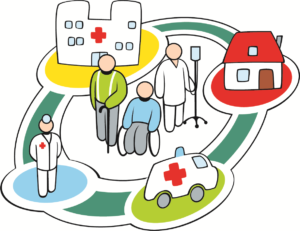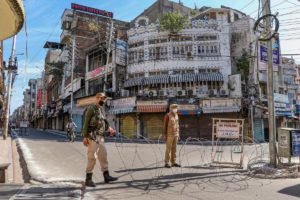“One has to be alive to be a patriot,” former Indian health secretary K Sujatha Rao wrote on Twitter on May 13, 2019, referring to election debates that focussed on issues of “nationalism and terror and not health”.
The data back Rao’s assertion of misplaced priorities.
In 2017, terrorism claimed the lives of 766 Indians, or 0.007% of all deaths, while health reasons claimed 6.6 million Indians, or 90% of all deaths.
8,000 times more deaths from ill-health than terror
There were 9.9 million deaths in India in 2017, with a death rate of 717.79 deaths per 100,000 people, according to the 2018 Global Burden of Disease (GBD), a global estimate of morbidity and mortality published by the University of Washington.
Communicable, maternal, neonatal and nutritious diseases caused 26.6% of all deaths in India, and non-communicable diseases caused 63.4% of all deaths, while injuries accounted for 9.8%.
Deaths by conflict and terrorism fall under the “interpersonal violence” category, accounting for 0.007% of all deaths, or 766, according to GBD data.
Terrorism claimed even fewer lives than the above number, according to another database: there were 178 terror incidents reported nationwide in 2017, killing 77 and injuring 295, according to the South Asia Terrorism Portal.
Deaths due to diabetes (254,500), suicides (210,800), infectious diseases (2 million) and non-communicable diseases (6.2 million) put together are 8,000 times the deaths caused by terrorism (766).
One reason for the large number of deaths in India due to disease is India’s low public health spending. India’s public health spending is among the world’s lowest. With a fifth of the world’s population, India’s public expenditure was 1.02% of gross domestic product (GDP) in 2015.
While India’s health budget is rising—in 2018 it was double of what it was in 2010—it is still inadequate, considering that India is home to a third of the world’s stunted children, has the highest number of tuberculosis patients and reports among the world’s highest out-of-pocket expenditure, an indicator of public healthcare failures.
The National Health Policy of 2017 talked about increasing public-health spending to 2.5% of GDP by 2025, but India has not yet met the 2010 target of 2% of GDP.
Poor investment in health and education directly impacts the country’s productivity and economic growth. Indians work for six-and-a-half years at peak productivity, compared to 20 years in China, 16 in Brazil and 13 in Sri Lanka, ranking 158th out of 195 countries in an international ranking of human capital.
(Yadavar is a principal correspondent with IndiaSpend.)




